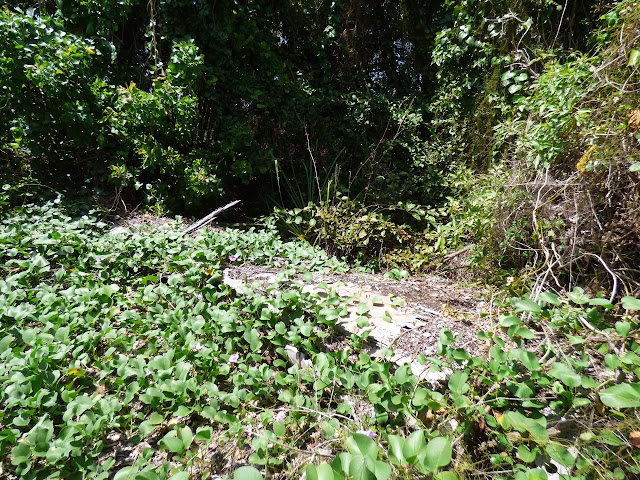Last November you may recall I managed to locate the wreckage of a WW2 bomber with my drone See the blog I posted on 6 November titled - USAF - B24 WRECKAGE - FOIL PROOF MARY.
I managed to visit the site on the ground with some Garngi rangers recently. There are no vehicle tracks to this area of Croker Island which means boat access is the only possible way of getting to the area on the ground. By way of reminder, the arrow points to the wreckage site at Cape Croker on the northern end of Croker Island.
The 1943 crash site was clear of trees. Sadly, four crew died as a result of this crash landing and subsequent fire. The photo shows evidence of a fire around the inner parts of the wings and adjacent fuselage. The No 2 prop (inner left) broke off during the final part of the landing roll when they hit a small ditch. The No 1 (outer left) engine shows a dark mark on the wing behind the engine. This must have been one of the two engines that had failed due to anti aircraft fire over Japanese controlled Indonesia.
In this 1980 photo a tree and some pandanus are seen around the site.
My drone photo from last year shows the right wing and now in 2022 a lot more trees.
The boat access to this part of Croker Island is complicated by a reef protecting the beach. The drone photo below shows the reef exposed at low tide. The larger clump of trees near the beach just right of centre is where the wreckage is located.
At times we had just 0.6 of a metre of water under the ranger boat so had to proceed with great caution. Once again I was really impressed by what Indigeous people can see in the water. They really do look into the water not just at the surface. Generations of hunting means it is in their DNA.
The ground photo shows the right wing that was visible in the earlier drone photo - now with a wet season vine growing over it.
Venturing into the trees revealed that the elements continue to take their toll on this 80 year old wreckage - below is the inner part of the right wing.
And the right rear part of the fuselage. The rear of the aircraft is in much better shape compared to the front. The post impact fire damaged the front of the fuselage much more.
The rear gunner position - anything of value has been stripped long ago.
Left rear fuselage.
The B24 wreckage is located in the clump of trees on the far right of this photo. After viewing the wreckage we sat in the ranger boat anchored just off the beach and talked about the B24 while having our lunch. The rangers had heard some of the story handed down from their elders. The two younger rangers hadn't heard that four American crew died in this incident - fighting to protect our country. We talked about the 'brotherhood of aviators' and how even though these four men died well before I was born, this site is more than just a largely forgotten and slowly corroding wreck, it is the site where four aviators lives were cut short, never to return to their families, never to grow old.
I have made contact with the 380th Bomber Group Association - the squadron this aircraft belonged to was a part of this group. They have provided a little more of the story - the recovery of the bodies of the crew and the high value parts of the aircraft. See link below.















Comments
https://www.ozatwar.com/ozcrashes/nt217.htm